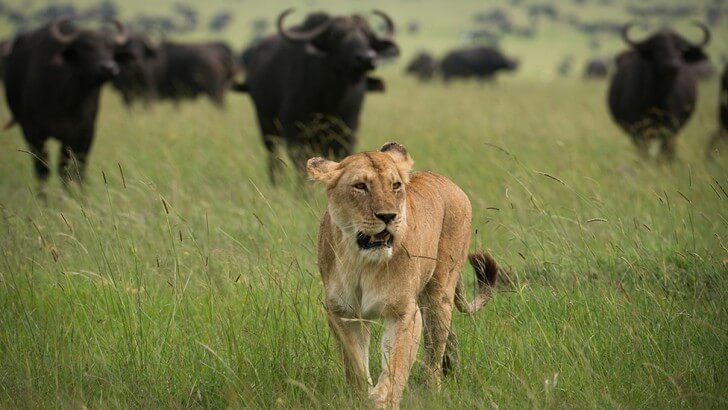BBC Earth newsletter
BBC Earth delivered direct to your inbox
Sign up to receive news, updates and exclusives from BBC Earth and related content from BBC Studios by email.
Animals
There is no king lion and they don't live in jungles.
From the Nemean lion slain by Hercules to Maahes the lion-headed Egyptian god of war, the timeless image of a lion has inspired myths the world over. Along with the species' starring roles in human legends, the lion has collection a few myths of its own over the years. Here are a few of those tall tales and the truth behind the myths.

Despite what Disney's classic movie would have you believe, prides don't have a Mufasa or Simba in charge of all other lions (or all other African animals for that matter). Rather than a king or queen, lions live in a egalitarian society without ranking.
Lions have famously acquired the title of ‘King of the Jungle’. However, the title is a little misleading as lions don’t actually live in jungles (and as we found out earlier, they don't have kings!). Their habits include scrubland, grasslands, savannahs and rocky hills, but not jungles. This is a simple case of lost in translation.
The word jungle has its roots is the Hindi word ‘jangle’ which means forest or wasteland - the latter could easily be applied to a savannah. The lion’s other title of ‘King of beasts’ won’t be disputed here. If you’d like to challenge it, please take the matter up with your nearest lion.
White lions have been regarded as sacred animals across Africa and there is a common misconception that they are albinos. While albino lions do exist, white lions are a separate subset of lions. White lions have a regressive mutation called Leucism and this means they have a reduced volume of melanin – the pigment that controls the colour of the lion’s fur and eyes. In fact, the colour of the eyes is the way to differentiate between white lions and albino lions. White lions have blue eyes while albino lions have a red or pink colouring.

A lion’s mane is usually seen as a way of calculating the sexual appeal of a lion to potential mates. The more voluminous the mane, the greater the appeal of the male. However, recent evidence refutes this as a universal rule. Maneless male lions in Tsavo were shown to be able to attract mates as well as being able to successfully defend a territory against other males.
Manes don’t always mean male as well. Mane lionesses have been observed, particularly in the Okavango Delta in Botswana. These lionesses engage in activities normally associated with male lions and have a greater probability of being infertile.

The common perception of a lion pride is that the female lions do all the hunting. However, emerging evidence suggests that isn’t completely true. The primary role of the lioness is to hunt, whereas the lion guards the territory, but lions are able to hunt for themselves. Not only that, but research suggests that the success rates of both sexes is roughly equal.

Featured image © Marie-Ange Ostré | Getty